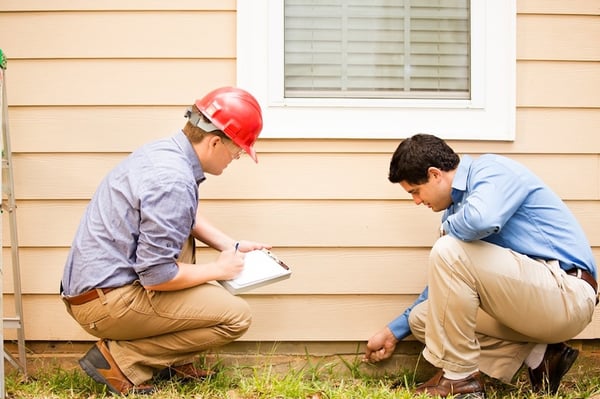The dangers of radon gas are finally starting to become mainstream, and it's about time.
Did you know that radon gas is the second leading cause of lung cancer, right behind cigarette smoking?
And, did you know that most people don't realize they've been exposed to radon until they've been diagnosed with lung cancer?
It's a scary thought, and it's one we don't want you to worry about.
So, how do you know if you're at risk for radon poisoning or lung cancer before the diagnosis?
Concerned you potentially may have been exposed to high levels of radon? Read our blog post: "What are the Signs Your Home Has a Radon Problem?"
We'll explore that question and more below.
Table Of Contents
- What Is Radon?
- How Are You Exposed To Radon?
- Test Your Home
- What Are The Symptoms of Radon Poisoning?
- Radon and Lung Cancer
- Get Your Home Tested Today
What Is Radon?
Radon is a naturally occurring radioactive gas.
It's found in soil all over the world and is produced when uranium, thorium, and radium break down in soil, rock, and water.
Then it seeps out of the soil, and into the air. Radon is odorless, tasteless, and invisible, so you have no idea when you're being exposed to it.
When radon is released into the air outside, it poses little to no risk to our health.
When it gets released into the air and trapped inside of our homes, schools, or workplaces, that's when the health issues start.
Radon gas can seep into buildings through cracks in walls or foundations and gets trapped inside. When enough accumulates, long-term exposure can be dangerous to your health.

How Are You Exposed To Radon?
Your body is exposed to radon every time you breathe it in.
Large amounts of radon can be found anywhere there's potential for the gas to get trapped, like your home, your workplace, or a school. Any type of building.
We spend most of our times at home, so most radon exposure occurs there.
Radon typically enters the home through cracks in the foundation or walls. Once it gets through those cracks, it gets trapped inside, where it can build up to unsafe levels.
There's also a chance that radon can enter your home through your well water.
It doesn't matter what type of home you have, any home can have elevated levels of radon.
Basements, crawl space, or slab homes are all at risk for elevated levels of radon.
It's estimated that one in every 15 homes has elevated levels of radon, with the highest concentration of radon found in the basement or the first floor.
And, you're neighbors home can test safe, but your home can still have elevated levels. It all depends on the soil your home was built on, and how your home interacts with it.
Test Your Home
The only way to know for sure if your home has elevated levels of radon is to test for it.
There are two types of tests for radon gas, short-term and long-term.
Short-Term Testing
If you're in a hurry, you can use a short-term test. These are used when people need quick results, like when the home is being sold.
Short-term tests can measure radon for just two to three days, and some will measure the levels for 90 days.
When you're performing a short-term test, you need to be sure you keep your windows and doors closed as much as possible, and avoid using fans that bring air in from the outside.
Long-Term Testing
Long-term tests last for 90 days are more, and are the ideal test to use to get an accurate reading of your home's true radon levels.
Radon levels fluctuate from day to day and month to month, so it's hard for short-term tests to get accurate readings.
The tests are relatively inexpensive and can be found at most hardware stores.
Be sure to follow the instructions carefully to ensure you get accurate readings.
You'll place the test in your basement or lowest level of your home, and you're all set.
When the test is done, you pack it up and send it to a lab to be analyzed. Most long-term tests deliver their results within a few weeks after receiving the test.
What Are The Symptoms of Radon Poisoning?
We're surrounded by radon. There's a really good chance that you breathe in small amounts of radon every single day without ever knowing it.
Unfortunately, there's no way for us to know if we're breathing in high levels.
There are no symptoms of radon poisoning.
That's the danger of radon exposure; we can't see it, taste it, or smell it. There's nothing to alert us to the fact that we're being exposed to high levels of radon until it's too late.
Radon And Lung Cancer
When you're exposed to high levels of radon for a long time, the gas can damage the cells in your lungs, leading to lung cancer.
Every year radon is responsible for about 21,000 lung cancer deaths in the U.S.
It typically takes 5 to 25 years for the cancer to develop.
About 10% of radon-related cancer deaths involve people who don't smoke, but if you do smoke and you're exposed to high levels of radon, you're at an even greater risk of lung cancer.

Get Your Home Tested
If we're being honest, every person in the country is at risk for radon poisoning.
Some occupations, like miners, and some states, like Ohio, are at a greater risk, but the risk is there for everyone.
Testing for radon is the only way to make sure you and your family are safe.
The experts at Radon Eliminator can come test your home to see if your home is safe from radon.
If it is, you can sleep a little easier at night.
If your radon levels are elevated, Radon Eliminator will talk to you about how to lower your radon levels, including mitigation systems.
The sooner you contact them, the sooner you'll know if your family is at risk or not.
Click the button below to get started.





